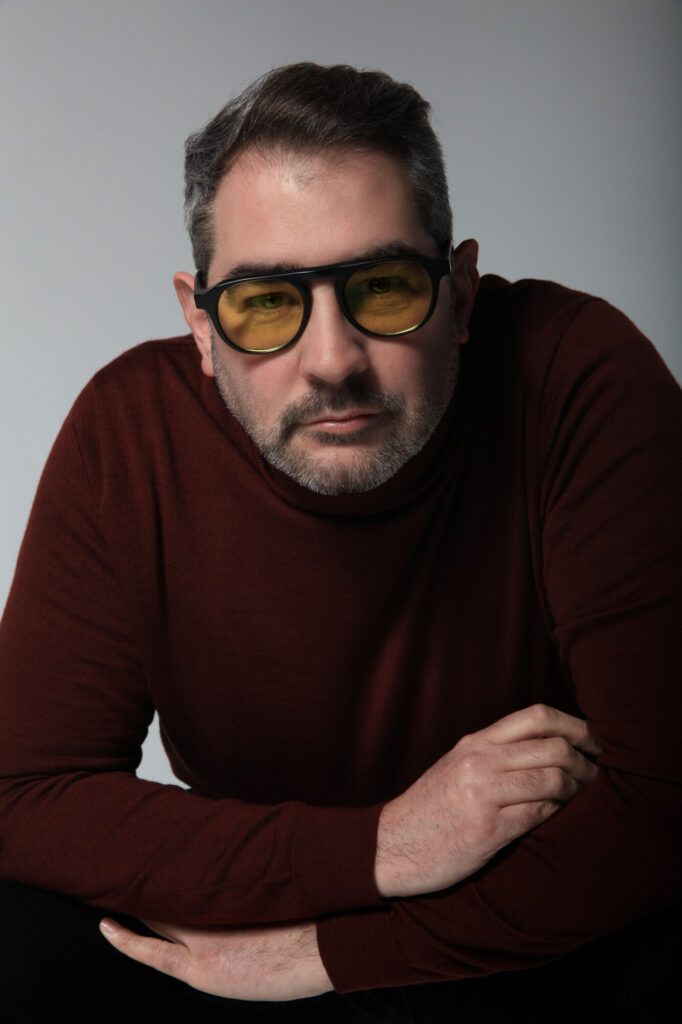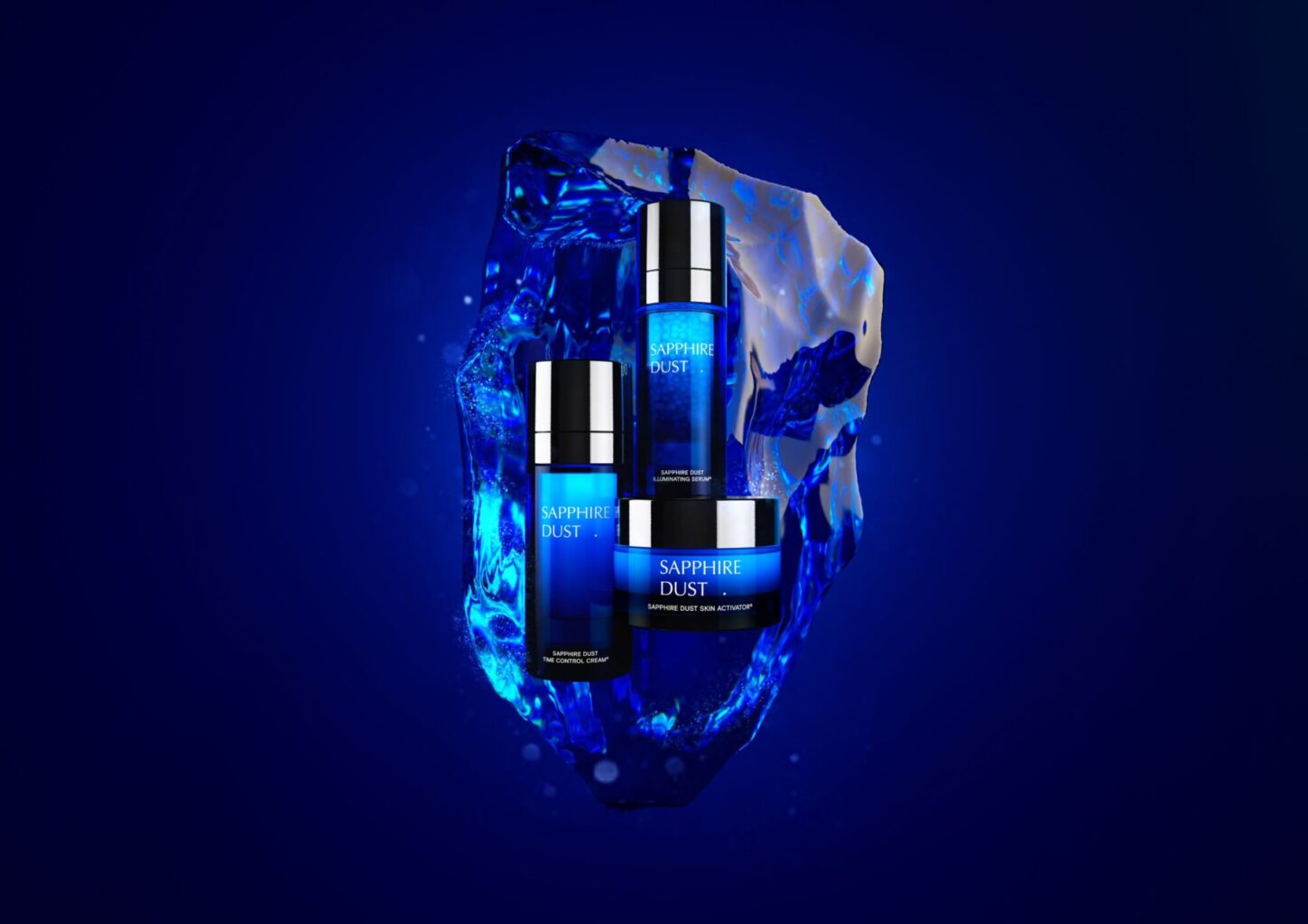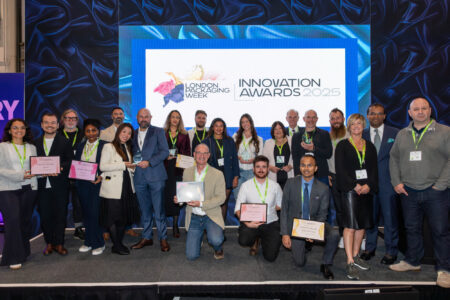From vision to reality: Packaging’s journey towards purpose and timelessness

Surfaces hold more than form; they carry stories shaped by texture, colour, and intention. In these moments of encounter, packaging reveals itself as an unspoken language – an expression that reaches beyond the product to touch the senses and imagination.
The quiet currents of change ripple through design, propelled by shifting values, innovation, and urgent calls for sustainability. What once seemed distant is now taking shape in real time, inviting a new dialogue between creation and consumption.
Packaging unfolds as a space where creativity meets purpose. It balances heritage and progress, function and feeling, earth and aspiration, each design a thoughtful response to the evolving world it inhabits.

Vincent Villéger, a visionary voice in contemporary packaging design and a regular at Easyfairs shows, particularly in his home city of London for London Packaging Week, reflects on this evolving landscape with clarity and optimism. “One of the realisations this year is that we’re starting to see some of that stuff we’ve been talking about for a long time actually come to fruition. We’re starting to see it materialise. We’re starting to see those solutions become viable at scale, become accepted by the public, embraced by the designers, and embraced by the many.” Concepts like refillability and reusability, once “part of trend reports and buzzwords,” are now “really viable, exciting solutions” arriving on the market. “I can be quite cynical, but there is a kind of glimmer of optimism as we’re starting to see some of those fairly utopian ideas actually come to the mainstream and executed beautifully a lot of the time.”
This momentum arises from an interplay of forces. “If you think of legislation versus what the public demands versus what the market will create, those contextual elements kind of massage each other into creating an ecosystem or environment where that can happen, and so we’re slowly seeing it come into play.” Yet it wasn’t always so straightforward. “A few years ago, some of those parts were missing, which is why I had to do some cajoling. I remember saying, ‘You have to work on that stuff. You can’t just sit back and think of it as a trend. We better start thinking about it.’” The challenge remains for manufacturers and material producers: “Until there’s demand, it’s hard to make things commercially viable.” But consumer shifts have accelerated dramatically: “We’ve seen a really quick shift in how consumers think, what consumers care about, and consumer expectations evolve faster than manufacturers can develop new materials.”
Legislation itself is a powerful force, stretching the requirements of what packaging has to be as a whole. Vincent acknowledges that balancing these demands requires contextual sensitivity: “How do I balance those in my process, my world, my imagination? It’s really contextual, depending on who you’re talking to, what the scenario is, and the environment the piece of packaging would go into.” His own design philosophy aligns seamlessly with this new reality. “I was never a believer that bigger is better, for instance. Take the classic Easter egg example – let’s make it bigger, and you get why: more impact on shelf, greater perceived value. But I always felt like all you’re doing is creating disappointment.” He continues, “On a purely physical level, a smaller pack feels more dense, and I equate density with luxury a lot more than size. So, if you take an Easter egg as a typical example, something more compact is going to feel heavier, and it’s going to make me want it more than something big but hollow.” This alignment means Vincent is not finding it too hard to adapt to legislation and that it “means I don’t have to do the convincing anymore because now, you know, mommy and daddy have said you have to eat your greens. So, it’s one job less for me.”

The new IQ of packaging
The evolution of packaging intelligence is unmistakable. “It does feel like packaging is getting more of an IQ. I see some of the deep thinking that goes into it.” Even the story behind the materials is given careful consideration: “There’s all manner of different things that have been thought about on a deep level.” As a judge on the Pentawards, Vincent witnesses and encourages this mindset: “We were judging the Pentawards recently, and that’s an exercise where we encourage and invite that kind of thinking.” However, he stresses that the consumer shouldn’t have to “intellectualise everything.” The hope is that “the thinking and storytelling you put in place seeps through into the consumer experience.” People “increasingly value choices that have a reason behind them, not just gratuitous choices.” The mantra “consume less, consume better” is no longer rhetoric but a guiding principle: “That purpose is going to become important.” For creatives, this focus “drives the creative thinking because otherwise you’re just faced with an infinite number of possibilities.”
For Vincent, grounding design in brand story and origin is vital. “Having to do that thinking about the brand story, the origin, and how that can help make sense of the design is part of the creative process.” Those brands with provenance and culture really stand out, and his recent judging experience confirms that such qualities are “huge plus points” that resonate deeply.
He does, however, acknowledge the cyclical nature of design trends: “Of course, we’re going to see that go the other way eventually. It’s only a matter of time before in those trend reports somebody says, ‘we just want gratuitous fun. We want things that just feel cool for the sake of it. We don’t want to have to think about or post-rationalise everything.’ But that’s not where we are right now.”
Nature’s influence is also unmistakable today, not only through substrate choices but in colour palettes, tones, and even typography. Vincent shares, “I’m working on a brand right now where we’re really pulling in those organic elements – organic textures, finishes, uneven patterns – because it ties back to the story and it’s right for the brand.” Still, he advises caution: “You always take trends with a pinch of salt because the reality is if you design with intent to serve the brand or product, there’s only so much influence you want the trend to have. You just want to find the right solution for that specific problem.”
From ambition to artistic freedom
Reflecting on his own creative journey, Vincent remembers a pivotal time at Burberry. “I loved my time at Burberry because when I joined, I was at a stage in my career where my next ambition was to design a perfume bottle for a new franchise, rather than a flanker or a gift box for an established franchise. I was there for eight years, and we launched a new franchise almost every year, so there was always something new coming.” Now, as an independent designer, he relishes the challenge and freedom. “I love it when the phone rings and there’s a new client. You have to quickly understand what they’re about – the brand, their idiosyncrasies – and really look for the bit that will make a specific difference that we can hold on to and come up with an interesting design.” Vincent is keen to push boundaries: “I really want to push things more – creativity, self-expression – and keep that sense of wonder going.” For him, “it doesn’t really matter what the trends are or what people are doing; it’s about keeping that personal relationship between you and the brand.”
Timelessness remains at the core of his work. “We don’t exist in a vacuum, but I always strive for timelessness in my work, partly because packaging can be a big investment. Whatever solution you come up with has to still work in five years.” He uses trends as a litmus test: “If something feels very ‘now’ and on-trend, I take a second look and ask how I can bring it to a point where it feels more timeless, extracting that DNA, that impact beyond just this year’s colour of the year.”
Finally, collaboration fuels Vincent’s process. “Events like London Packaging Week are really important. I enjoy them even more when I have a specific project and I’m trying to solve a problem and figure out who can help me.” He values his supplier relationships deeply: “One thing suppliers love to tell you when you start a project is ‘Anything is possible.’ I joke, ‘We’ll see in two weeks when I send the designs,’ but everybody is up for the challenge.” This pragmatic spirit drives innovation: “A good project team will want to explore the limits of what’s possible.”
His connection to the London creative scene is vital. “There are lots of agencies, creative students, and a big creative community in London… It’s always great to know that the local creative community is well-served. Otherwise, you just stop existing.” With clients all over the world – including the USA, Bermuda, Europe and the Middle-East – Vincent balances global perspective with local roots, “You want to make sure London remains a key part of the map.”
Discover more of Vincent’s work at www.villeger.net
Check out our socials
Lorem ipsum dolor sit amet, consectetur adipiscing elit Lorem ipsum dolor sit amet, consectetur adipiscing elit
The latest packaging projects

London Packaging Week 2025 welcomes record visitor growth
London Packaging Week 2025 sees 15% growth, bringing 5,752 visitors together to celebrate innovation, sustainability, and the future of packaging.

London Packaging Week Innovation Awards celebrate the year’s most bold, creative, and sustainable packaging
The London Packaging Week Innovation Awards recognised the UK’s most imaginative and sustainable packaging designs, celebrating creativity, craftsmanship, and brand storytelling across 13 categories.

